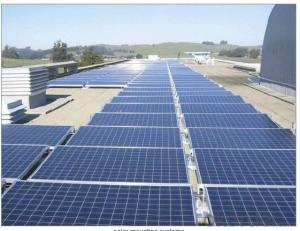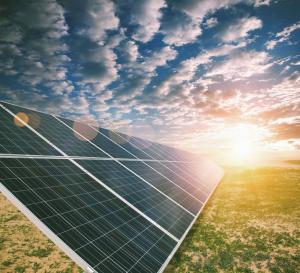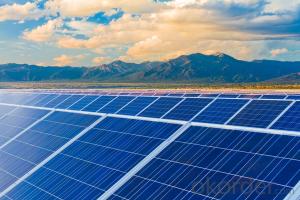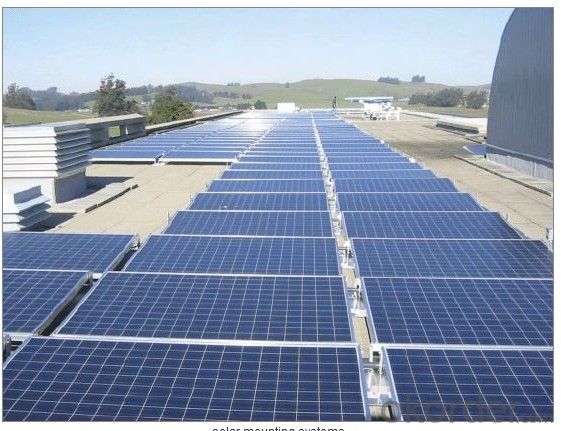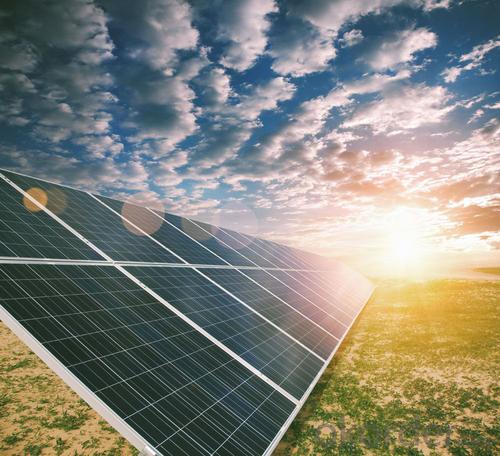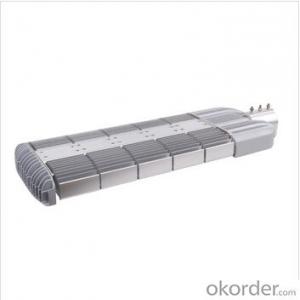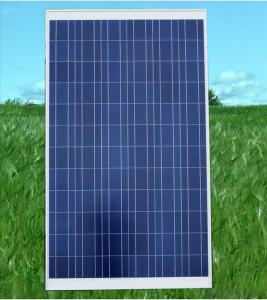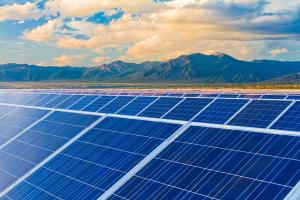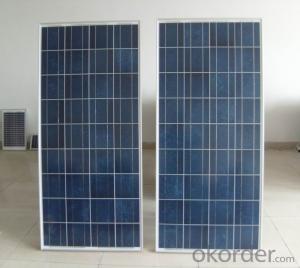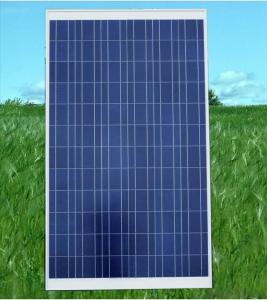Foldable CNBM Polycrystalline Silicon 315W Solar Module
- Loading Port:
- China main port
- Payment Terms:
- TT OR LC
- Min Order Qty:
- 100000 watt
- Supply Capability:
- 10000000 watt/month
OKorder Service Pledge
OKorder Financial Service
You Might Also Like
Specification
About CNBM
CNBM International Corp, established in 2004, is the business entity for trade and logistic of CNBM Group.With the advantages in Cement, Composite Materials, NewBuilding Materials and Engineering, CNBM mainly concentrate on coal, steel and construction equipments and give priority to solar and wind energy development.CNBMInternational is highly recognized by its business partners and clients all over the world and has established good business relationship with the customers in over 120 countries and regions all over the world.
The capacity of CNBMSOLAR is reach to 1GW, and make sure each year our shipment capacity is more than 700-800MWs, at the same time, we have set up the largest solar power station with our partner in Ukraine.
Standard Test Conditions of Polycrystalline Silicon Solar Panel
The opto-electrical specifications shown below are stabilized values being measured at Standard Test Conditions of multicrystalline silicon Solar Panel, Irradiance: 1000W/m2, Spectrum: AM1.5 at 25°C, The info below is subject to manufacturing tolerances. Where appropriate minutes of measurement are available and are used for the dimensioning of the installation.
Advantages of Polycrystalline Silicon Solar Panel
A&M Solar performance guarantees for 25 years
12 years guarantee for workmanship for multicrystalline silicon Solar Panel
Timeliness of delivery
Quality Products certified (TÜV, UL, CE, VDE, ISO)
Process is as follows:
1, the battery test
2, positive Welding - Inspection –
3, on the back of cascading - Inspection –
4, laying (glass cleaning, material cutting, glass pre-processing, laying) –
5, laminating –
6, to flash ( to the side, cleaning) –
7, fitted border (glue, loading angle keys, punching, install box, scrub I glue) –
8, the welding junction box –
9, high-pressure test –
10, component testing -- -
11 appearance inspection, packaging and storage;
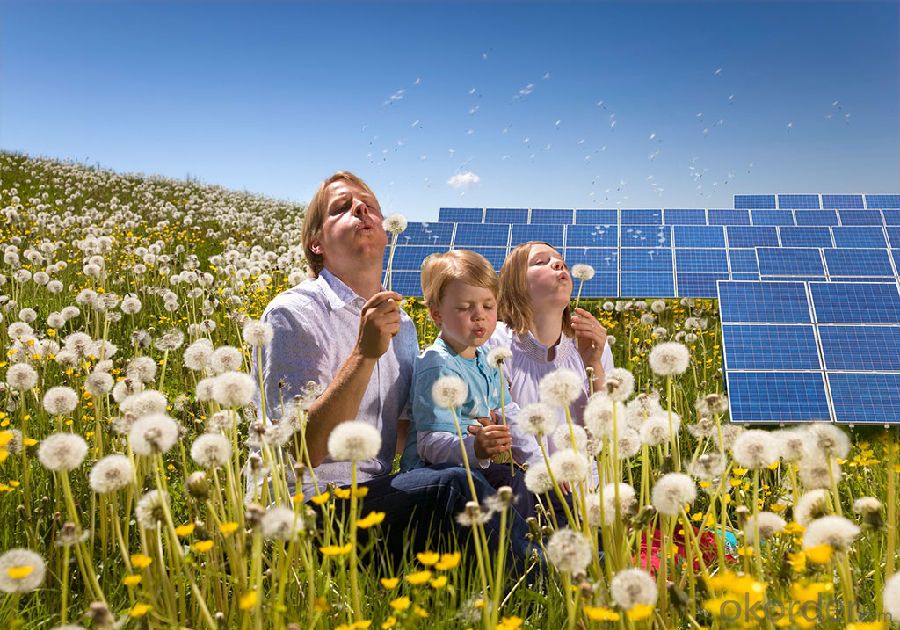
FAQ:
1. How long will my inquiry get response?
Your inquiry related to our products or prices will be replied within 24 hours.
2. Can I get professional service and suggestion?
Well-trained and experienced staffs to answer all your questions in fluent English.
3. Do you accept OEM or customized design?
OEM & ODM, any your customized lightings we can help you to design and put into product.
4. What if I need specific design?
Distributorship are offered for your unique design and some our current models.
Data sheet
| Maximum power | 315W |
| Cell type(mm) | Polycrystalline solar cell 156*156 |
| Number of cell(pcs) | 72(6*12) |
| Manufacture site | China |
| Open-circuit voltage(voc) | 45.1V |
| Maximum power voltage(vmp) | 37.3V |
| Short-circuit current(isc) | 8.88A |
| Optimum operating current(imp) | 8.45A |
| Power tolerance | 0~+5W |
| Module efficiency | 16.2% |
| Dimensions(mm) | 1956*992*40 |
| Weight | 27 kg |
| Backsheet | Silver |
| Frame Colar | White |
| Frame | Anodized Aluminum Alloy |
- Q: Hi, i want to please a solar panel in Lima Peru, my Latitude is -2 and longitude -77. I understand that since i am in the southern hemisphere, my panel should be pointing north. However, i am using a program called pvdesigner, and according to this, y should face my panel with and azimuth of 00degrees (0 = south) and a tilt of 60degrees. Does this make any sense?thanks
- It doesn't make sense to me. I am at latitude 37.7,and my panels face south at about 38 degrees. Yours should be pointed north as you suggest. Being so close to the equator, and in the absence of any better information, an angle of 2 degrees would be appropriate. However, choosing the best angle will greatly to your overall efficiency, so I would try to find a more credible source, How about the folks from whom you buy the panels. They would know precisely. By the way, if you haven't installed the system yet you might consider going to a high voltage system to cut known line losses in the conductors between the panes and the inverter, I did that plus increasing the conductor size over that recommended by the manufacturer. I gained about two percent in efficiency
- Q: they are pretty expensive. So does it save you money on electricity in the long run? How easy is it to connect solar panels to your house?
- Yes, solar panels can cost allot of money up front. They will eventually pay for themselves over time. Today it is pretty easy to install solar panels. They've made panels so easy that you can pretty much just have a technician hook them up to the electrical box outside your house you start saving money. Any electricity you generate over what you use...the utility company will PAY you! If you dig my response please like me on Facebook (link below). Thanks!
- Q: So, I've seen cheap solar panel kits for sale from Harbor Freight, and regardless of whether or not I were to buy a set from them or someone else, I was wondering what the process of implementing a small-scale solar system into your household electrical system would be.I've read articles that started out too in-depth or were speaking of systems on a much larger scale.Can it be as easy as buying the panels and inverter, and plugging it into a socket, or is there more to it?Some of the articles I was reading had mentioned having to contract with your electrical supplier, having to have an electrician tie it all in in some special/ necessary way, using a battery pack (would this be necessary for a tied-in system?), or using the system to only power single items, like a water heater, or plugging items into a connected battery-pack, all of which I'm not sure is necessary or needed for what my goals/ means are/ would be.
- Grid tie inverters are expensive, but you might find a used one cheap on E-Bay, Crags list. Almost any grid tie inverter will work as you are thinking low power, but it likely needs to be 50 hertz or 60 hertz, which ever you have, and 230 volts ac or 20 volts ac which ever you have. It will work for a range of dc voltages, so your solar panels need to produce voltage near the center of that range. I considered buy the 3 PV panel set of 5 watt panels that Harbor freight sells. but I did not determine if the three panels can be conveniently connected in series to produce about 50 volts at light loads, or 00 volts if you buy two sets. You probably do not need the load controller, that comes with each set. I think most grid tie inverters automatically adjust to the dc voltage you supply them, unless it is below some minimum such as 50 volts. It is illegal to connect ordinary inverters to the power company, but they will probably not notice a small system unless you burn your house down. Most inverters will phase lock with the power companies frequency, but they are not designed to do that, so bad is likely unless you connect a resistor such as 0 ohms at 00 watts in series with the ac out of the inverter. If the resistor smokes you should disconnect promptly, then try again to see if you can get phase lock quickly. No smoke, likely means you are one of about 000 co-generators on the electric grid, You can short out the resistor with short piece of very fine wire which will hopefully melt if something goes wrong, such as the power company not sending electricity for 0. seconds or longer. Nearly all inverters have an over load feature, so the thin wire is a back up. Please be careful as people sometimes don't survive an electric shock at 20 volts.
- Q: And I'm tring to decide if I should buy it. Let's say my house would need Megawatt per hour. That's 000 megawatts per hour. This solar panel produces 36 watts. I don't know how if that means per hour or what???
- Well, a 5 Watt solar panel running for an average of 2 hours per day, (there will be clouds), will put 5 * 2 = 80 Watt-hours into the battery. Assuming your inverter, (to convert 2 Volts D.C. to 20 Volts A.C.) runs at 00% efficiency, that will only supply power to run the grill for about 22 minutes a day. In the real world, neither the battery nor the inverter will work at 00%, to your actual heating time will be significantly less. If you get about 0 more of those 5 Watt solar panels, that would give you about 50 Watts * 2 hours or about 800 Watt-hours which would more than cover what you want to do. The next problem is getting an inverter which will handle a 700 Watt load. They can be found at auto supply houses and the larger truck stops. (They are popular with semi-drivers.) Note however, that a standard car battery will have to supply about 55 Amps, which means you will have to use some really heavy wire, like # 4 or # 6 welding cables to connect the inverter to the battery to minimize losses. P = 700 Watts E = 3 Volts I = 53.84 Amps R =
- Q: Would like to know if the DIY Solar panel systems can be as efficient as a commercial grade panel.
- Create okorder
- Q: How much energy can solar panels generate?
- The amount of energy solar panels can generate depends on various factors such as the size and efficiency of the panels, the location and orientation of the installation, and the amount of sunlight available. On average, a typical solar panel can generate about 250 to 400 watts per hour. However, larger solar installations or those with higher efficiency panels can generate several kilowatts or even megawatts of energy, which is enough to power homes, businesses, or even entire cities.
- Q: Can solar panels be used to power a swimming pool?
- Yes, solar panels can be used to power a swimming pool. Solar panels generate electricity from sunlight, which can be used to operate pool pumps, heaters, and other pool equipment. This helps reduce reliance on traditional energy sources and can result in cost savings.
- Q: Can solar panels be damaged by hail or extreme weather?
- Yes, solar panels can be damaged by hail or extreme weather. While solar panels are designed to withstand various weather conditions, including hail, severe storms with large hailstones or intense winds can potentially cause damage to the panels. However, most solar panels undergo rigorous testing to ensure they can withstand such conditions, and many manufacturers offer warranties to cover any damage caused by hail or extreme weather.
- Q: Can solar panels be used to power an emergency response center?
- Yes, solar panels can be used to power an emergency response center. Solar panels convert sunlight into electricity, providing a sustainable and reliable source of power. By harnessing solar energy, emergency response centers can ensure uninterrupted electricity supply, even during power outages or in remote areas. Additionally, solar panels are environmentally friendly and reduce reliance on traditional energy sources, making them a viable option for powering critical facilities like emergency response centers.
- Q: How do solar panels affect the overall sustainability of a building?
- Solar panels can significantly improve the overall sustainability of a building by generating clean and renewable energy. By harnessing the power of the sun, solar panels reduce the reliance on fossil fuels and minimize greenhouse gas emissions, helping to combat climate change. Additionally, solar panels can lower energy costs, enhance energy independence, and contribute to a more resilient and eco-friendly infrastructure.
Send your message to us
Foldable CNBM Polycrystalline Silicon 315W Solar Module
- Loading Port:
- China main port
- Payment Terms:
- TT OR LC
- Min Order Qty:
- 100000 watt
- Supply Capability:
- 10000000 watt/month
OKorder Service Pledge
OKorder Financial Service
Similar products
Hot products
Hot Searches
Related keywords
